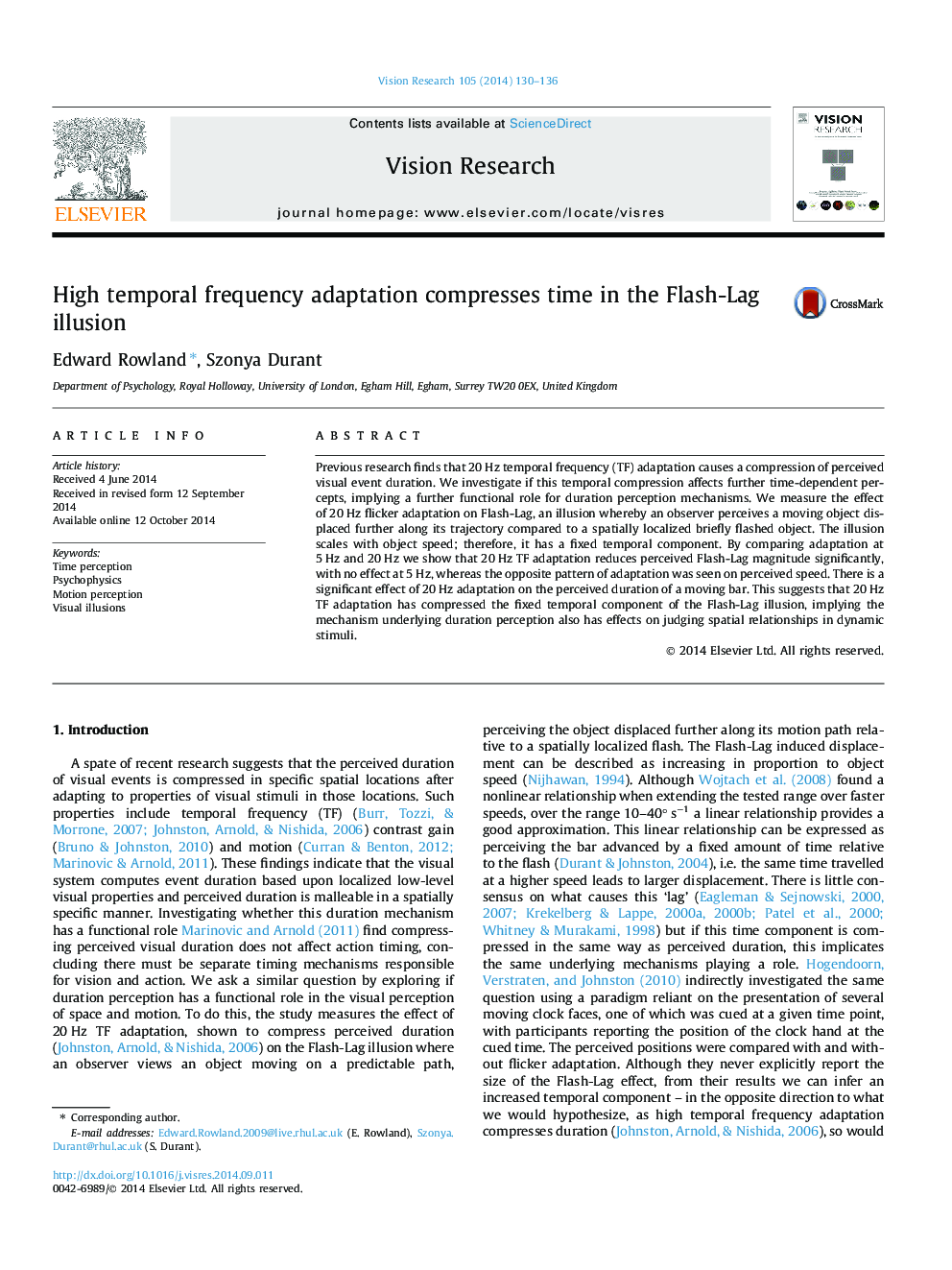| کد مقاله | کد نشریه | سال انتشار | مقاله انگلیسی | نسخه تمام متن |
|---|---|---|---|---|
| 6203282 | 1603189 | 2014 | 7 صفحه PDF | دانلود رایگان |

- 20Â Hz temporal frequency adaptation reduces magnitude of the Flash-Lag illusion.
- This reduction cannot be explained by change in perceived speed alone.
- Therefore, 20Â Hz adaptation compresses the time component of Flash-Lag.
- We conclude duration affects visual processes reliant on space-time calculations.
Previous research finds that 20Â Hz temporal frequency (TF) adaptation causes a compression of perceived visual event duration. We investigate if this temporal compression affects further time-dependent percepts, implying a further functional role for duration perception mechanisms. We measure the effect of 20Â Hz flicker adaptation on Flash-Lag, an illusion whereby an observer perceives a moving object displaced further along its trajectory compared to a spatially localized briefly flashed object. The illusion scales with object speed; therefore, it has a fixed temporal component. By comparing adaptation at 5Â Hz and 20Â Hz we show that 20Â Hz TF adaptation reduces perceived Flash-Lag magnitude significantly, with no effect at 5Â Hz, whereas the opposite pattern of adaptation was seen on perceived speed. There is a significant effect of 20Â Hz adaptation on the perceived duration of a moving bar. This suggests that 20Â Hz TF adaptation has compressed the fixed temporal component of the Flash-Lag illusion, implying the mechanism underlying duration perception also has effects on judging spatial relationships in dynamic stimuli.
Journal: Vision Research - Volume 105, December 2014, Pages 130-136